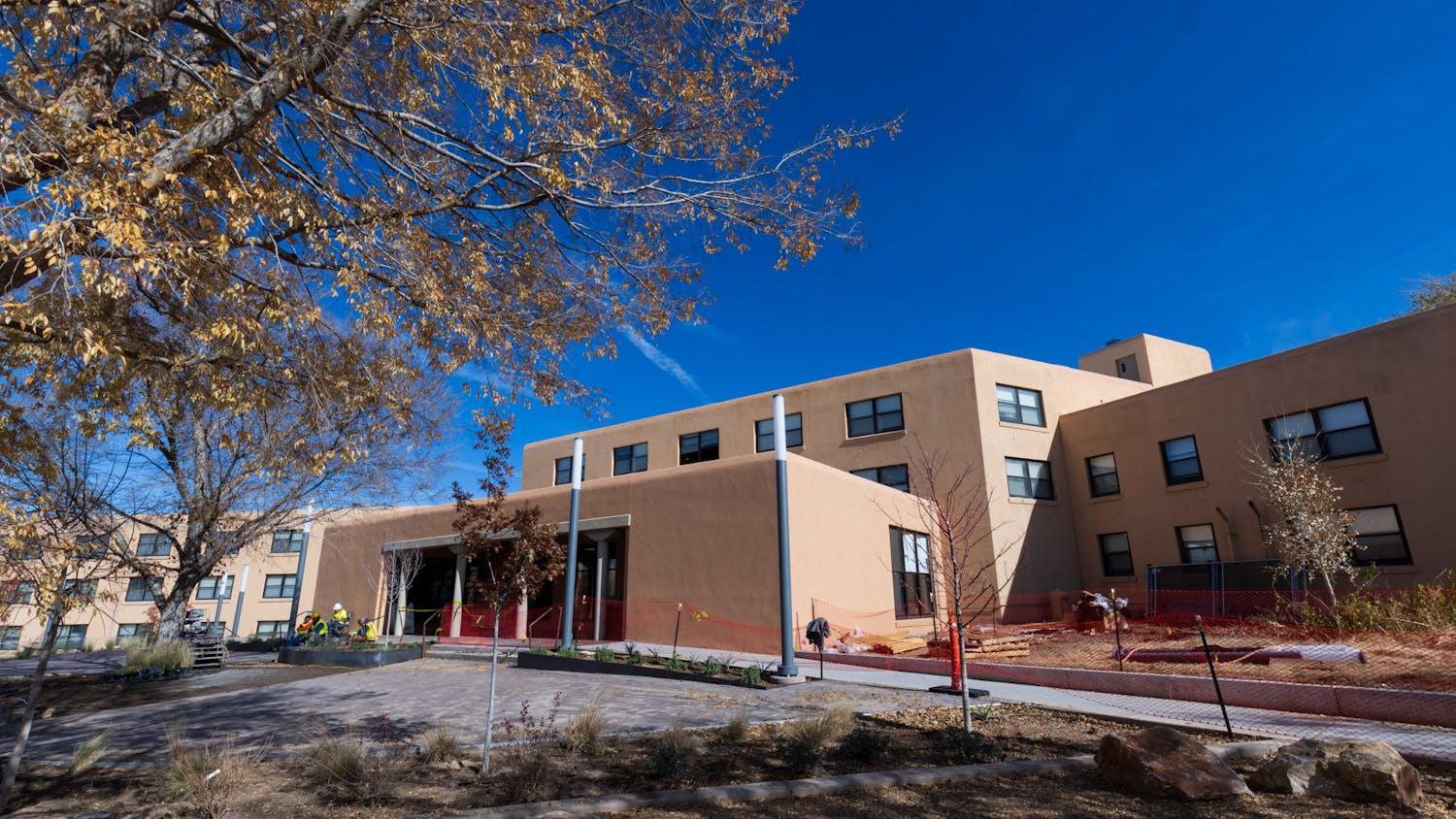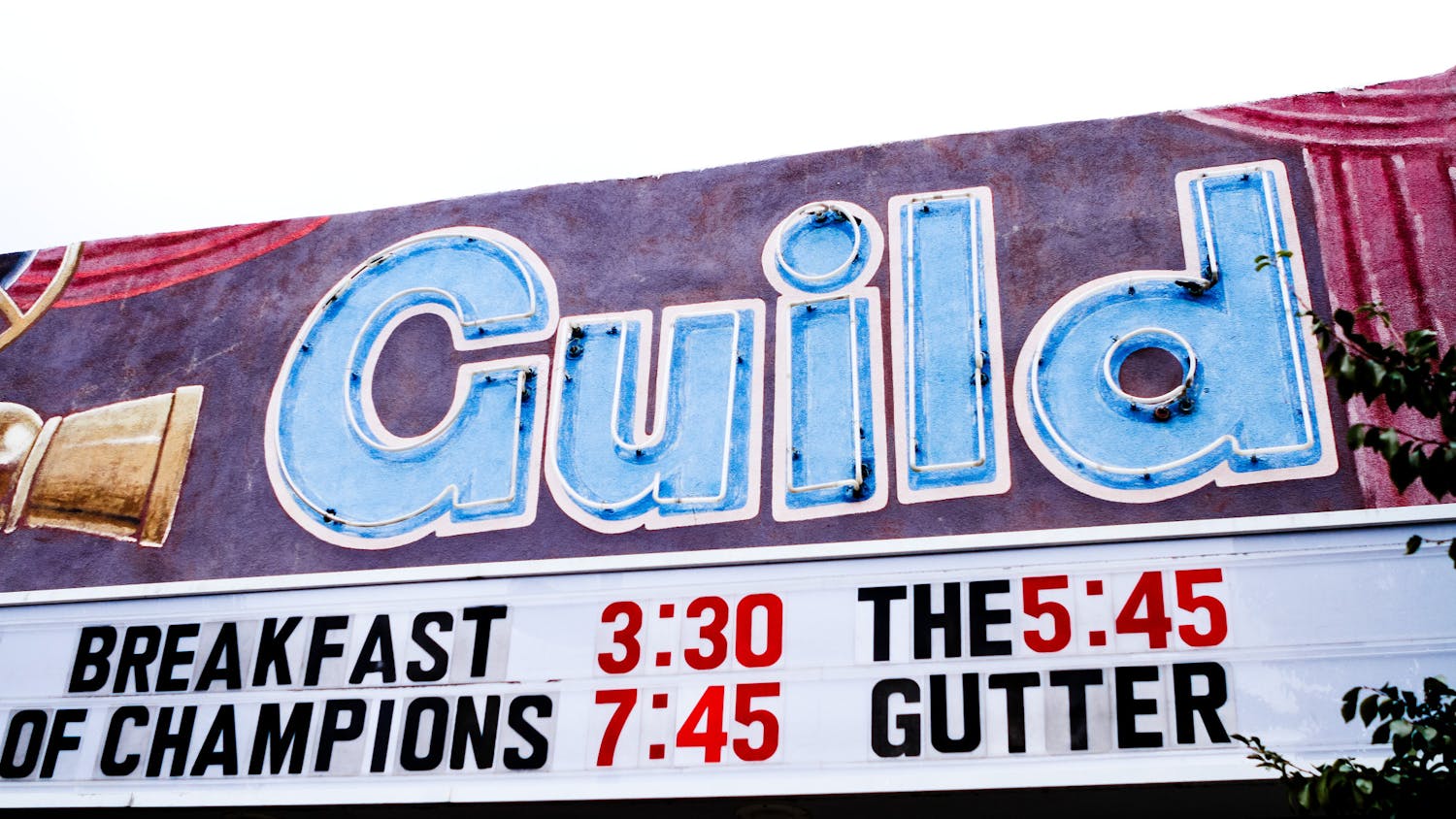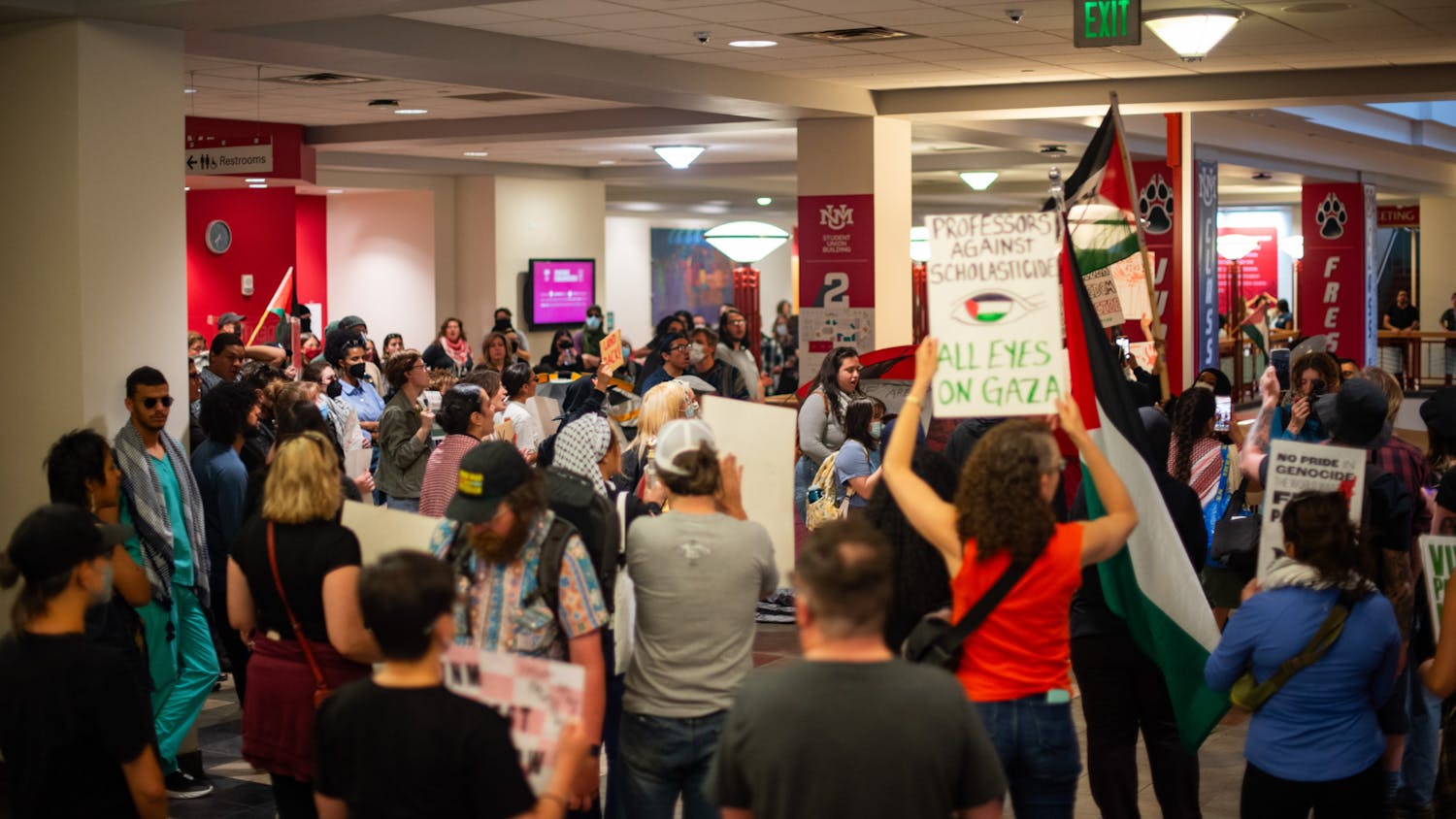Construction of the original UNM library building (later named Zimmerman Library) including the “Grand Hall” and its east wall with recessed bays was completed in 1938. It has been stated that the architect John Gaw Meem originally intended to include the “Three Peoples” paintings by Kenneth Adams in the building plans although there are no notations of any works of art for the bay walls in the 1935-1938 interior floor plans. Regardless, the canvas paintings were inserted into the four wall bays in late 1939. Whether Meem initially intended them to be included as part of building or it was a decorative afterthought, what is certain and well documented is that the then UNM President James F. Zimmerman had a major hand in the conception and completion of the “Three Peoples” paintings.
Even though Zimmerman instituted many innovations and construction projects at UNM and was purportedly responsible for an increase of Hispanic and Native American enrollment, it is generally not expressed in popular and official history that during his administration (1927-1944) there was racial tension on campus. Two episodes involving segregation and racial attitudes/bias preceded the library construction and the paintings. In mid- to late 1930s UNM sororities and fraternities systematically excluded or denied membership of Hispanic/Mexican American/Nuevomexicano students. Also, in 1933 Professor Richard M. Page of the UNM Psychology Department composed a survey, “Attitude Toward Natively Spanish-speaking People of the Southwest,” intending to explore Anglo attitudes of native hispanics and distributed it to UNM classes and local high schools. The survey questions were considered not just leading but also bigoted and insensitive and caused much uproar and protest in the local and statewide Nuevomexicano community. A meeting held in Spanish on May 5, 1933 in Albuquerque was attended by 1,200 people who demanded the removal from UNM of both Professor Page for his implementation of the survey and President Zimmerman for overlooking and supporting the project.
Given this discord directly involving Zimmerman it is possible to posit that perhaps as an attempt to cover up or address racial division and strife on campus, Zimmerman commissioned his “friend and fishing companion” Kenneth Adams to paint the panels that Zimmerman himself had conceptualized embodying his view of New Mexico and its people. But even as the project commenced, tension existed on campus. The Oct. 22, 1938 Daily Lobo featured a news spot with a photograph of the painter Kenneth Adams and information that he was going to begin work on the library paintings. On the very same page an unrelated article reported the appearance of Nazi swastikas on Student Union bulletin boards during campus elections.
Since the 1939 installation of the paintings it appears there was no formal mention of them until 1970. Due to both increased Hispanic and Native American enrollment and the commencement of counter-cultural anti-war student protests, student activism at UNM began to focus on their objections to the “Three Peoples” paintings. It included participation from various campus organizations such as MEChA, Kiva Club, Southwest Indian Student Coalition, La Raza Estudiantil, ASUNM, Black Student Union, GSA, Hispanic Honor Society, Hispanic Student Services, National Organization of Women, Lesbian Bisexual Gay Alliance and NAACP. Their activism consisted of letters to the Daily Lobo editor and editorials (starting in 1970 by Las Chicanas, a student women’s group), two de-facings (1970, 1974), the 1993 student rallies and the Mural Coalition’s organized protests and many meetings with the administration from 1994 to 1995.
The archives reveal that not one of the activists’ concerns or demands related to their opposition to the paintings, which they viewed (many still do) as racist, stereotypical, demeaning and sexist, were ever honored by the administration. Reported in the New Mexico Daily Lobo (Oct. 19, 1994, Nov. 8, 1994), Neri Holguín, a fearless and tireless student activist and member of the then Mural Coalition, decried the administration’s inaction and bureaucratic roadblocks stating “For more than 30 years, many students have struggled to get something done about the murals in the Zimmerman Library. When this old issue comes up, it is not addressed by the administration. Is it to be believed that for 30 years, students were just working the wrong channels?” She further stated, “Racism should be addressed by UNM as an institution — not just by student groups.” In 2017, close to eighty years since they were painted and now after over forty years of periodic protest, the Adams panels are still exhibited in the “Grand Hall” with no plaques or signage discussing the controversy and past activism.
Samuel Sisneros is a historian and Daily Lobo reader. He works at the Center for Southwest Research at UNM Zimmerman Library as a manuscript archivist. For the past year, he has worked on a historical timeline of student activism and the controversial “Three Peoples” paintings located in the west wing of the Zimmerman Library. His opinions do not represent UNM or any of its organizations.
References:
Sisneros, Samuel E. (2017). Student Activism and the Kenneth Adams “Three Peoples” Paintings at the University of New Mexico (1970-1995): A Pictorial Essay. Manuscript submitted for publication.
Zeleny, Carolyn, “Relations between the Spanish-Americans and Anglo-Americans in New Mexico: A Study of Conflict and Accommodation in a Dual-Ethnic Relationship”
(doctoral dissertation, Yale University, 1944).
Gonzales, Phillip, “Spanish Heritage and Ethnic Protest in New Mexico: The Anti-Fraternity Bill of 1933” New Mexico Historical Review 61.4, 1986.
Welsh, Michael, “Often out of sight, Rarely Out of Mind: Race and Ethnicity at the University of New Mexico, 1889-1972” New Mexico Historical Review 71.2, 1996.
Get content from The Daily Lobo delivered to your inbox





